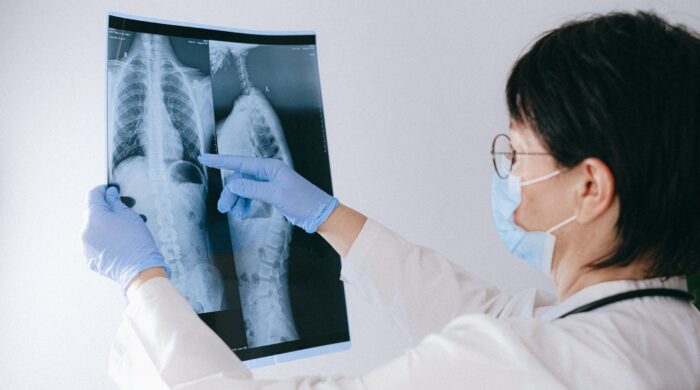There is sometimes confusion surrounding lung cancer screening protocols. In this post, we’ll define what a low-dose lung cancer screening (LDCT) is; discuss who should be screened and what the risks are for those who choose to have the procedure. We’ll also explore the types of lung cancer screening coverage provided by Medicare.
What is a low-dose lung cancer screening?
A low-dose lung cancer screening is often called a helical CT scan or a low-dose spiral. It is a newer method of scanning, which rotates continuously to capture 3D X-rays of the lungs, moving in a spiral motion as it documents the imagery. It’s called a “low-dose” CT scan, because it uses much less radiation than the regular chest CT scan that has been in use for many years.
In addition, it’s a much faster diagnostic test and takes less than five minutes to administer. Plus, it’s a much less stressful procedure for those who have claustrophobia or don’t like enclosed spaces, as both ends of the testing machine are open, which allows technologists to see and hear their patients for the duration.
What are the risks associated with a low-dose lung cancer screening?
As with any diagnostic test, there’s always a risk of getting a false-positive result, which can be very distressing for anyone. To think that you may have a life-threatening condition is never pleasant; having unnecessary follow-up procedures and tests can be detrimental to one’s health, both mentally and potentially physically.
There is also a risk of over-diagnosis associated with cancer screenings, which happens when cases of cancer are detected that may never have caused issues for the patient but are treated nonetheless.
Perhaps the most serious side effect (though uncommon) from repeated low-dose lung cancer screenings is the possibility of the radiation in the scans to cause cancer in an otherwise healthy person.
Who should be screened for lung cancer?
If lung cancer is detected early and caught before it spreads, the likelihood of surviving at least five years or more improves to 59 percent. This understandably compels many to be screened who otherwise may have opted not to be tested. The LDCT scan isn’t intended for low-risk individuals, based upon the reasons stated above, but is ideal for those who have the following risk factors for lung cancer:
- Anyone age 55 – 80 who smokes
- Anyone age 55 – 80 who has quit smoking within the last 15 years
- Smokers who have a history of smoking at least one pack of cigarettes a day for a minimum of 30 years
- Anyone who has a family history of lung cancer
Will Medicare cover low-dose screenings?
Although traditional x-rays (standard chest CTs) are covered through Medicare, low-dose lung cancer screenings are not covered unless “additional preventative services” are added to the coverage plan. There are criteria that must be met to qualify for this benefit, including: being at least 55 years of age but not older than 77; being asymptomatic; having an extensive 30+ years smoking history and/or currently smoking, plus receiving a written order for the screening, which documents that all of the criteria are met.
There are also additional requirements such as attending a counseling and a shared decision making visit with a healthcare professional.
Where can I go to get a low-dose lung cancer screening?
If you or someone in your family wishes to be screened for lung cancer, please contact our Western Washington Medical Group Imaging Center. The highly skilled technologists there use state-of-the-art equipment to offer the best diagnostic tests available.
